Fantasy: Which WR prospects have the best chance to become stars?
Find positional rankings, additional analysis, and subscribe to push notifications in the NFL Fantasy News section.
Prospect Fantasy Outlooks
- Quarterbacks
- Running Backs
- Wide Receivers
- Tight Ends
With the 2019 NFL Draft just over a week away, we’ve had time to go over prospects' game tape, analyze their athletic testing, watch interviews, and assemble as many puzzle pieces as possible to project what their professional careers will look like.
As we wait to find out how NFL front offices value the incoming crop of rookies, we can begin to translate available information to help us make fantasy decisions in the future.
Landing spots will have a major impact, not only in terms of a player's opportunity and draft capital but also coaching and team culture. A promising athlete drafted into a positive environment has an opening to reach his full potential, while the same player selected by the wrong team may never overcome his situation.
The range of outcomes for college stars entering the pros is vast. The draft class is filled with boom-or-bust receivers, but let's take a look at the wideouts with the best chance to become fantasy relevant at the next level.
Elite upside
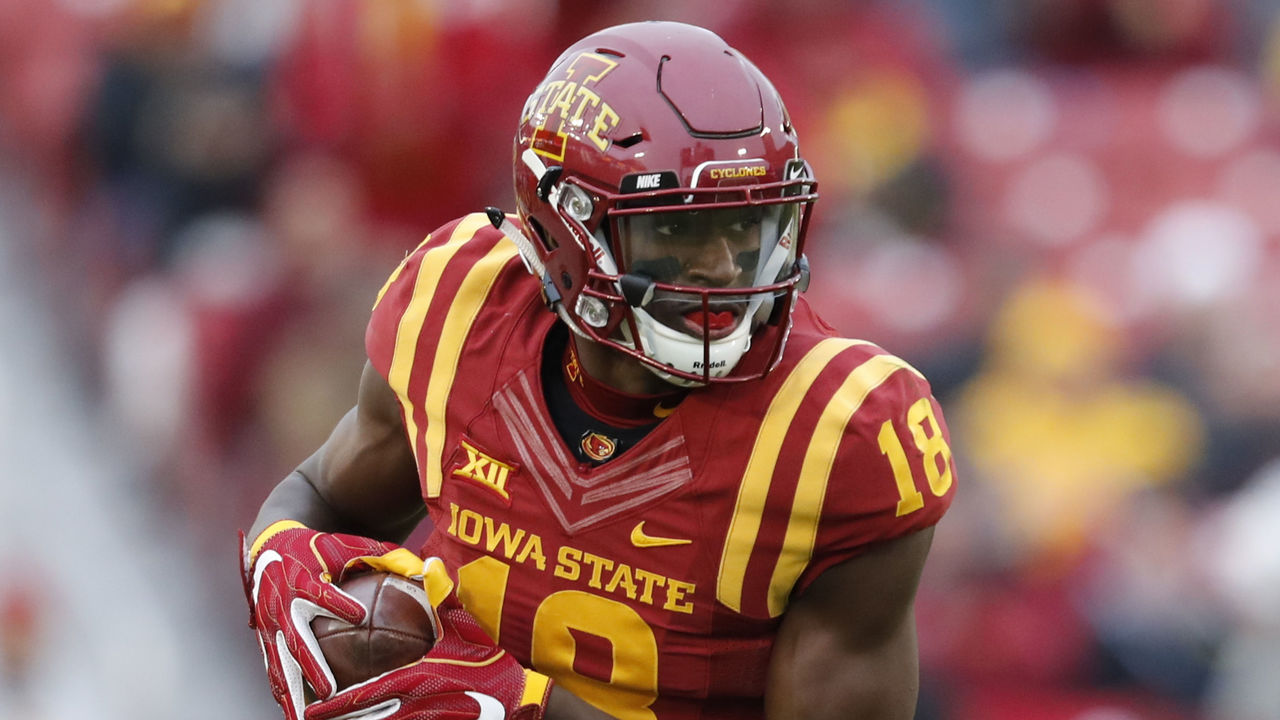
Hakeem Butler, Iowa State
N’Keal Harry, Arizona State
A.J. Brown, Mississippi
D.K. Metcalf, Mississippi
Overall, you could classify this year's rookie skill position players as underwhelming. There may not be any surefire transcendent stars incoming, but this foursome of wideouts comes closest to fitting the bill.
Butler recently moved above Harry in my rookie dynasty rankings and will occupy the top spot in my next update. Packaged in a 6-foot-5, 227-pound frame, Butler offers the best combination of skills and athleticism in this top tier. He's physical and explosive with the ability to leverage his size and strength to fight off defenders on contested balls, while also battling for yards after the catch. Players who exhibit his natural adjustments to the ball tend to translate into successful downfield and red-zone threats.
One of the main reasons why Butler passed Harry in my ranks is pure ceiling. Harry's odds of sustained success in the pros are higher than Butler's, but if we're looking at best possible outcomes, Butler gets the nod. Harry doesn't create consistent separation, so he'll need a quarterback who's willing to throw it up for him and/or an offensive coordinator designing plays to get him in space - like bubble screens. Harry pinpoints the ball well and once he has it, he's adept at generating yards post-catch. His college resume featured 38 broken tackles in three seasons, according to Pro Football Focus.
Brown and Metcalf were teammates and will enter the NFL with very different skill sets. Brown is more well-rounded and can play inside or out, though his best chance at stardom moving forward will be in the slot. Brown has incredibly sure hands and a wide catch radius. He makes smart decisions on option routes and gets open with ease.
Metcalf is a physical specimen who is more of a project than some people may realize. He makes most things look so effortless that it's hard to imagine him as anything other than a No. 1 receiver on Sundays, but he has a very limited route tree and primarily lined up on one side of the field at Ole Miss. His game lacks nuance, but that may not matter if he can simply dominate defenders downfield with his uncanny straight-line speed for a 6-foot-3, 228-pound pass-catcher.
Fantasy outlook: If Butler can clean up his collegiate drops, he'll have a chance to emerge as a top-15 fantasy receiver with double-digit TD upside. ... Harry is the safer fantasy pick, with his biggest risk factor being an offense that lacks imagination. He might be the most pro-ready of this bunch, which could lead to WR3 fantasy numbers as a rookie if he lands with the right team. ... Brown's best bet may be as a complementary option, lining up next to a more dominant outside weapon who can draw attention away from him. He's also got WR3 upside, though I suspect it will take a year or two before we see it. ... Metcalf will be one of the most interesting selections in this year's draft. The combine star has a high bust probability unless he can expand his skills with NFL coaching. Hopefully, his injury issues (neck, foot) don't prevent him from reaching his apex.
Dangerous in so many ways

Marquise Brown, Oklahoma
Miles Boykin, Notre Dame
Parris Campbell, Ohio State
While some people have Marquise Brown in their top four, I can't bring myself to do it given his size (5-foot-10, 166 pounds) and recent Lisfranc surgery. His abilities as a playmaker can't be questioned and we've seen small wideouts get more opportunities to excel in the NFL over the last few years, including other speedsters like Tyreek Hill and Brandin Cooks. Brown is still 10 lbs to 15 lbs lighter than that pair and durability concerns will plague his draft stock.
Boykin is quickly becoming one of my favorite receiver targets. Not only did he finish with the best SPARQ score from Three Sigma Athlete, the 6-foot-3, 220-pounder has legitimate WR1 attributes if everything pans out. That will require him to improve the technical side of his game, including finding ways to beat press coverage. It would also be nice to see him show more aggressiveness in all phases. For now, he'll lean on that other-worldly athleticism, reliable set of hands, and excellent adjustments to the ball, things most wideouts on this list wish they possessed.
I didn't expect to be fond of Campbell and yet I now view him as the next Golden Tate. Campbell isn't far behind Boykin in terms of athletic testing but brings it together in a RB/WR hybrid build. Everything about his game is thrilling as a dangerous open-field runner and tackle-breaker who can score from anywhere on the field. His production was held in check on Ohio State's loaded offense, but he was showcased as more than just a receiver with plenty of screens, handoffs, and gadget plays. Though Campbell needs to polish up his routes, he's capable of earning a role from day one.
Fantasy outlook: Despite his impressive speed, quickness, and route-running skills, Brown may ultimately end up as a part-time offensive weapon rather than a full-time receiver. There's no doubt he'll be a highlight-producer though, which locks in his fantasy value in best-ball leagues. ... Boykin is reminiscent of a more athletic Devin Funchess with an upside closer to someone like Kenny Golladay. Boykin has an outside shot to become the most productive receiver in this class. ... Even with a 4.31-second 40-yard time, Campbell wasn't used as a field-stretcher at Ohio State, though he could add that to his arsenal at his next stop. In the right offense, we're going to see him thrive in real life and fantasy. Unfortunately, dynasty owners seem to be wising up to that fact, since his ADP in rookie drafts is now approaching the end of the first round.
Overhyped
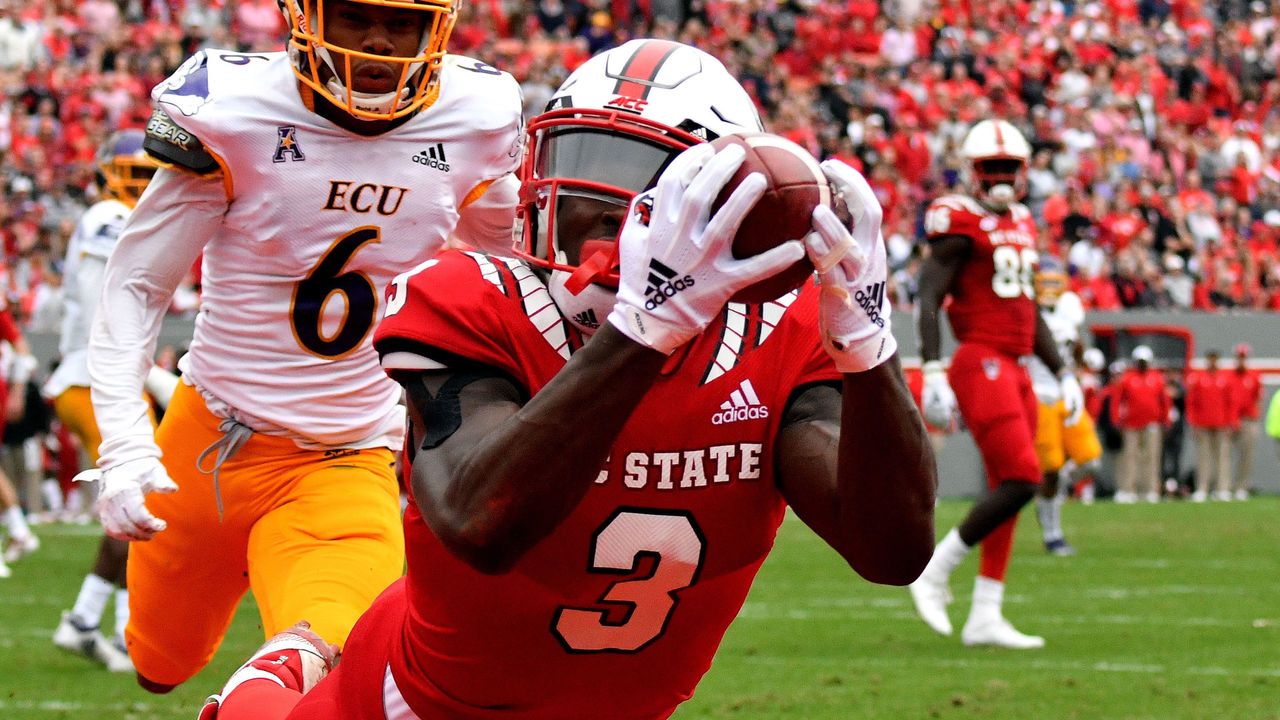
Kelvin Harmon, NC State
Andy Isabella, Massachusetts
J.J. Arcega-Whiteside, Stanford
Riley Ridley, Georgia
It's difficult to speak negatively about prospects, considering the number of variables left to be sorted out, including landing spot and how they acclimatize to the NFL. Still, there are still three prospects who I struggled to grade as highly as others in the industry.
Harmon is widely viewed as a top-10 option in dynasty rookie drafts, but I don't see it. What I do see is a player who needs more hunger if he's going to challenge to be great at the next level. Harmon is slower than the other top receiver prospects and lacks the elite traits that could help him win early on. He rarely creates significant separation, unless the play breaks down. Back-shoulder catches could be his calling card, but he may need to redshirt for a year or so to develop his tools.
Isabella will have a role in the pros, just not a starring one. His body is filled out compared to another speedster like Marquise Brown; however, Isabella is nowhere near as dynamic. The UMass product has outstanding acceleration that can be leveraged in the screen game or used to keep defenses honest, though his tendency to readjust his grip during catches won't be effective with NFL defenders closing the gap much quicker than his opponents in college did.
Arcega-Whiteside has one of the coolest names on this list and I still believe that can sometimes inflate a player's value. Sadly, once you get over the name, there's a slew of negative items that need to be addressed. He mostly played outside in college, though a role as a big-slot receiver might be in his future. He's a decent route-runner, but his lack of speed and fluidity and his inconsistent hands spell trouble.
Riley garnered a lot of buzz before the combine, only to stumble with subpar athletic scores. He's difficult to evaluate given that there's a lot to like from his tape. His natural receiving talent, overall good routes, and an ability to create after the catch offer the impression of a future NFL starter. However, those speed scores explain his slow stop-starts and make you wonder if he'll be able to beat pro corners.
Fantasy outlook: Harmon's combine struggles are a sign of things to come. His disappointing athletic profile and lack of high-end skills will limit his professional career. If his ADP doesn't drop, let someone else draft him. ... Isabella's competitive approach might help him evolve in the next few years; if not, his contributions will be one-dimensional in the NFL. Another player you can target in best-ball formats but should shy away from in re-draft. ... Arcega-Whiteside does a good job of getting position on jump balls and can win contested catches, which is perhaps enough for a starting role, just not on your fantasy squad. ... Even though Riley's stock has fallen considerably since January, I'd place my chips elsewhere.
Underhyped
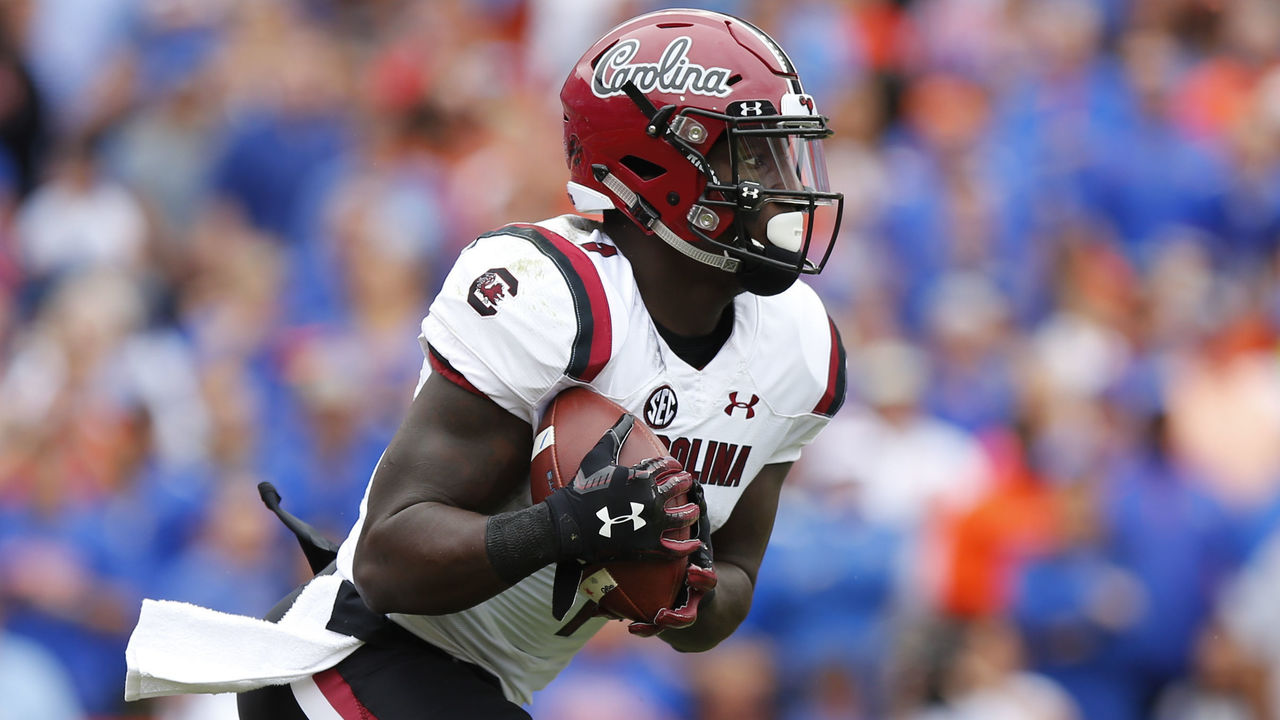
Deebo Samuel, South Carolina
Jalen Hurd, Baylor
Another standout on the list of best names, Deebo Samuel pairs beautiful route running and solid body control with strong run-after-catch ability. His reason for being underrated might have something to do with having to rise above poor quarterback play in college. He also dealt with some injury woes, reoccurring hamstring issues and a broken leg to be specific. Samuel isn't as fast as Campbell, but he offers many of the same qualities.
Let's hope the Buccaneers' reported interest in Hurd is true since there's room for him to be deployed as the team's third receiver, while also having a role in the backfield like he did at Baylor. Once a four-star running back recruit, Hurd has displayed a natural ability as a receiver and now uses his ball-carrying skills to rack up yards after the catch. Good coaching can help him improve his route running and unlock his versatile skill set even further.
Fantasy outlook: Samuel doesn't profile as a star; however, there's plenty of fantasy value in a productive No. 2 receiver. He's worth a top-15 pick in dynasty rookie drafts. ... Comparisons between Hurd and Cordarrelle Patterson might be selling the former short as a receiver. Hurd's upside could cross Patterson's dual-threat arsenal with the receiving skills of a bigger-bodied Robby Anderson. Either way, this is the type of high-ceiling player you should be filling your rosters with.
Need for speed
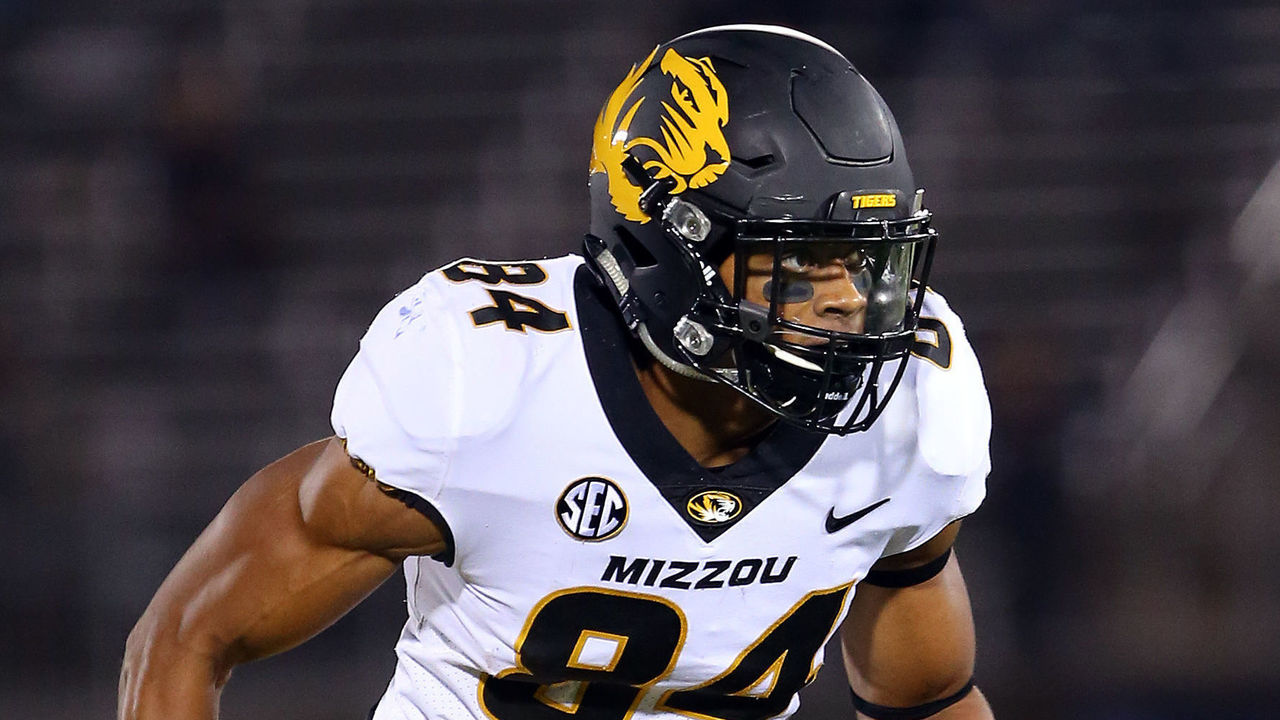
Emanuel Hall, Missouri
Terry McLaurin, Ohio State
MeCole Hardman, Georgia
Hall, McLaurin, and Hardman all posted times of 4.39 seconds or faster in the 40-yard dash. Hall has a long injury history (hamstring, groin, shoulder) and an equally problematic drop history. He's the second coming of Ted Ginn. McLaurin is one of the older prospects at 24, which is perhaps why he's the most well-rounded of the trio. Both McLaurin and Hardman were underused in their offenses, making them sleepers to outperform their current ADPs.
Fantasy outlook: I don't recommend getting overly excited about anyone here, but these are three names that are sure to pop up for big weeks when they connect. Keep them in mind for DFS and best ball.
Work in progress
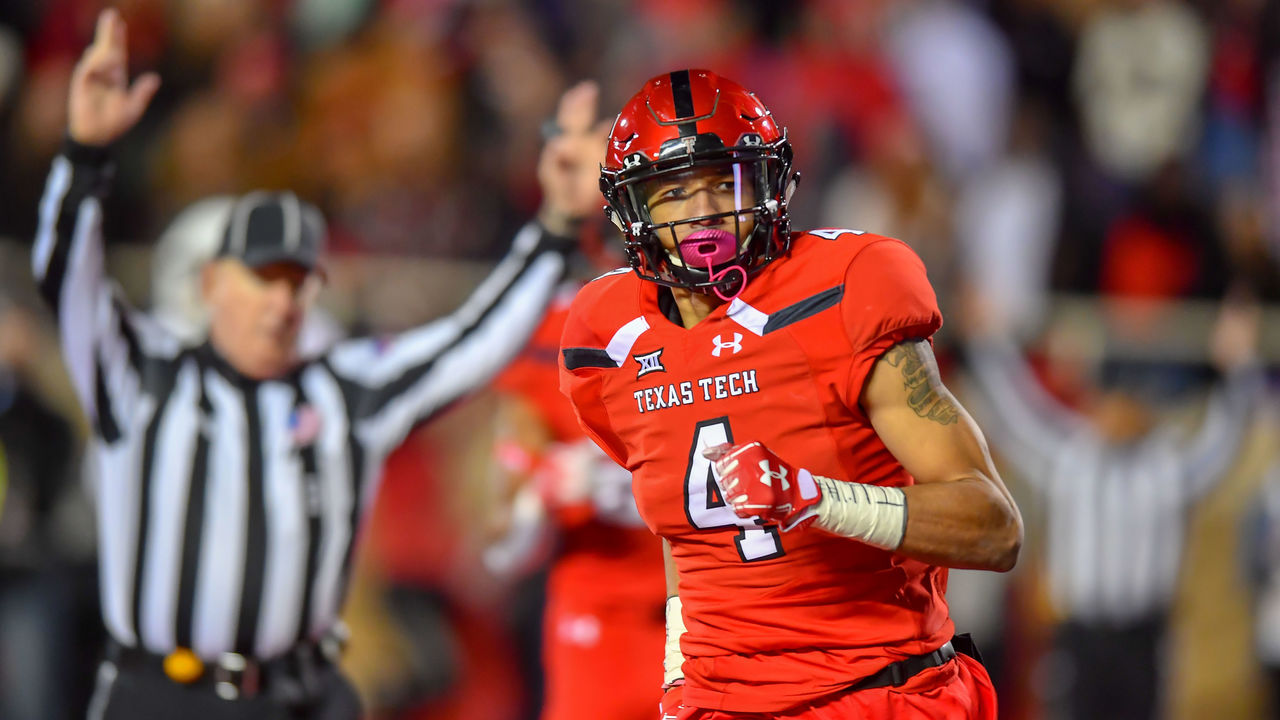
Antoine Wesley, Texas Tech
David Sills, West Virginia
Lil’Jordan Humphrey, Texas
There's a lot of depth in this year's class, though at this point, we're talking about players that are more long-term projects due to obvious flaws.
Wesley is intriguing at 6-foot-4 and can make stunning grabs in tight coverage. Whichever team selects him will need to get him in the training room immediately to help him fill out and work on his speed.
Sills also needs to bulk up. He doesn't have great balance or body control and will need to become a large possession receiver to carve out a role.
Humphrey does a lot of things well, but his horrifically poor speed scores (4.75 seconds in the 40) could leave him off teams' draft boards entirely. He used athleticism to win in college and won't have that luxury in the pros.
Fantasy outlook: If you're looking for a sleeper in this bunch, Wesley has long-term fantasy upside as long as he gets paired with a quarterback who's willing to throw it into coverage and let him make a play.
Playing the slots
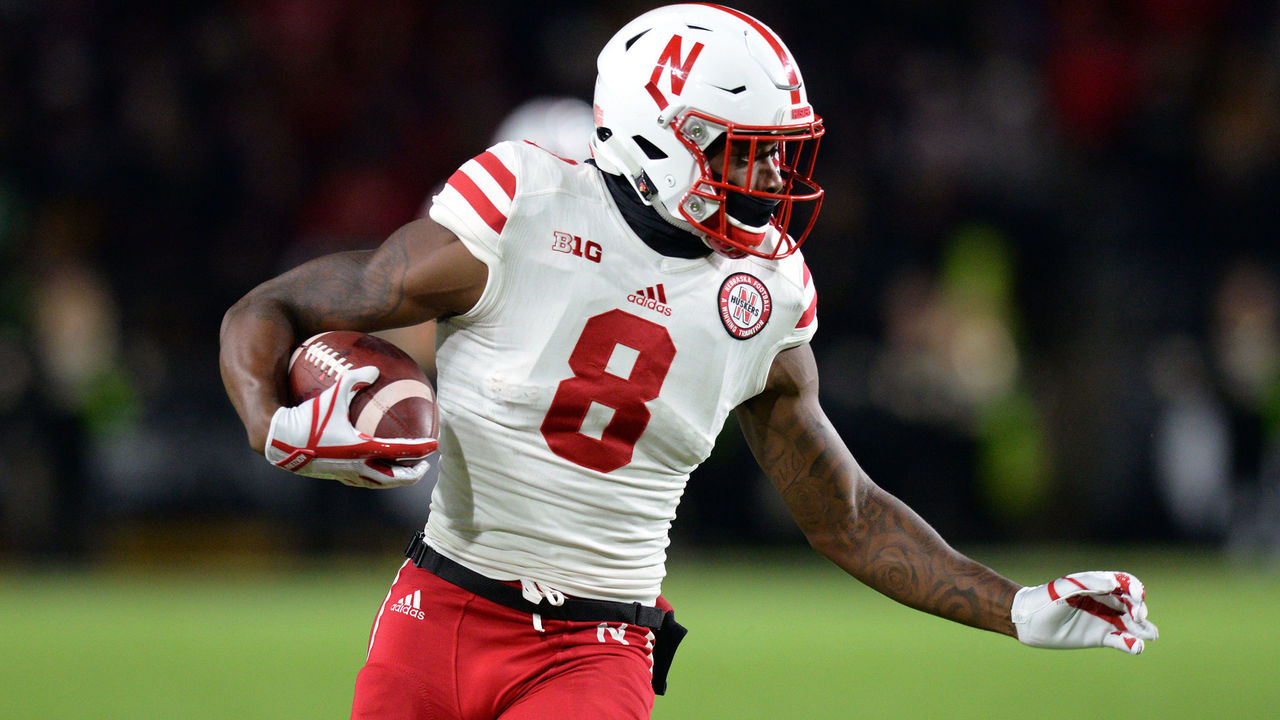
Stanley Morgan Jr., Nebraska
Hunter Renfrow, Clemson
Morgan is one of the smoothest route runners in this class and always seems to make the right adjustment to the ball. Renfrow is a technical route runner with impressive hands. Both players are limited as athletes.
Fantasy outlook: I rarely spend picks on receivers who profile as volume-dependent slot options, especially those with poor athletic profiles, but Morgan Jr. and Renfrow could sneak onto the fantasy radar in the right offenses. If you want to scoop them up, make sure not to invest too high of a pick.